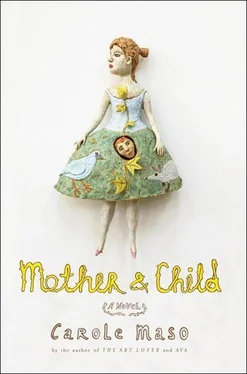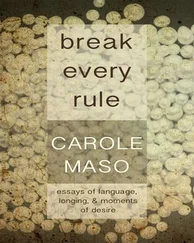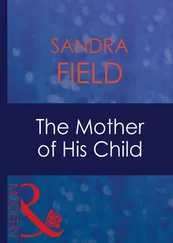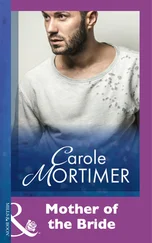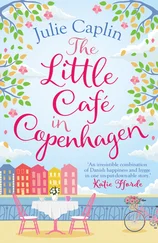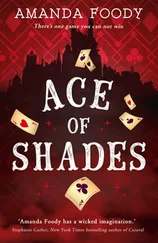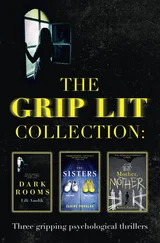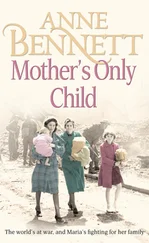The child urges the mother not to linger, and the mother understands, though she fears that she soon will reach the point of no return. The way is steep, and the mother’s footing is unsure. She wonders why they did not go back with the men.
She sees swirling concentric rings now, and she realizes she is far beyond the Ice Age all of a sudden — the rocks more ancient than those marked by glaciers — and with this realization she plummets, and her ember goes out.
At this point, she turns on the miner’s lamp she been wearing all along on her head. The lamp lights the cave nicely, and she points out to the child the minerals and the essences. Look, she whispers, look. They have gotten to the place where the rock layers run vertically now instead of horizontally.
Five hundred million years ago, in this very place, the North American and African continental plates slammed together with unimaginable violence. This consoles the mother who knows that they are small and their lives insignificant, and that one day all the catastrophes will be erased. Astounding reds and purples and greens open up for the first time in millennia, miles below the wounded site.
If this is the Afterlife toward which she was being pulled with such magnetic force now, if this was the place that had been beckoning them from the very start, she wanted no part of it. Still — the colors. . I wish you could see them, she says to the child. She was fearful of the void, fearful of the drop — and then suddenly not. If there is only meaninglessness in the end, only nothing, only welter and waste, she did not feel it.
She looks far, far up to the surface and sees now two shimmering ghost towers of glass, casting their twin shadows before her.
When she called for the child now, the child did not answer. She had dissolved back into the mother’s body entirely, and with this, the mother felt more able to face whatever it was that was here. She stood at the beginning of time, at the bottom of the canyon. She was being bombarded by light. She had not died here. She had lived. She had lived to give birth to the child. She would stay alive for her, and for all the children. She could see it plainly now. Never had anything been more clear. She had been summoned here to the depths of the earth, to the origins of the world, the beginning of time, to receive this message. She felt at the infinite mercy of the universe. Somehow she had survived. She closed her eyes.
17
the red book of existence

THE MOTHER WAS entranced with the large red book with the gold embossed letters, and from it she read out loud to the child thinking it might help soothe them a little. Though on the surface the child did not seem in need of consoling, the mother understood what the child could not.
In the book it said everything in the world is made of quarks and electrons, which are energy waves, and that these energy waves have the potential for taking form. Solidity, or the appearance of solidity, is something conjured by stimulating our sense receptors and ultimately creating an image in our brains. Each of these swarming particles exists as a shimmering wave of potential until its wave function collapses (caused by such things as the presence or absence of the observer). The mother leaves the room to get a biscuit and the child is desolate. She did not move her head too much so as not to disrupt the receptors, for what would she have if she does not have the mother?
It’s mind out there in front of them — it’s the only place the world and its images and tactile impressions exist.
That night the child thinks that when the mother leaves the room, she is no longer anywhere at all. That she no longer exists on any level. She can’t keep her mother together. And the child too has no color or form unless particles interact with the mother’s consciousness.
Tell me we exist, the child begs.
Silly girl, the mother whispers.
You should have never opened that red book with the gold letters, the child says.
Though it could be worse, the child supposes. Of course it could always be worse.
She will live with the appearance of solidity if that is what is asked of her — perhaps she was already doing it. They move through the enigmatic world to the hardware store at the edge of town. Everything is exactly the same as it was before they opened that book. She shall believe it: the five packages of nails on the shelf, the tower of light bulbs, the man behind the counter who holds a metal box with a lock on it, the Spiegelpalais in the distance, and in the middle distance three GinGin girls with backpacks, and now too close for comfort, the Toothless Wonder.
She didn’t want to be stranded on the wrong side of the stability divide.
The mother smiled.
That night, the mother sits at the end of the child’s bed. She looks at the child: shiny, bright, emitting photons, packets of electricity and magnetism. She concentrates hard not to take her eyes or mind from her, even for an instant.
IF ALL THE people in the world perished and the world returned to welter and waste, what she would remember best from that desolate place would be the Super Stop & Shop.
She liked going to the grocery store. She liked to go alone, but she liked it equally when the child accompanied her. The child loved making lists, and they would reach for things and put them in the carriage and check them off the list. It made the mother feel efficient and a definite part of things to do this. She liked driving the carriage, standing behind it, moving purposely down the numbered rows.
She also liked looking at what all the other people were doing. She liked the way they picked up certain cans or bottles or boxes, the way they would turn and examine them for dates and codes and counts. Sometimes she heard someone in an aisle talking on a telephone to someone at home to ask if there was enough butter. She thought it was a lovely question. And that there was someone there to answer it.
A riot of color and sound and sensation would stream toward and past the mother in waves. The abundance always made her a little woozy. If there were any one place in the world where the lecture about the starving children would make sense, it would be here, she thought. She had never seen so much of everything. In the vaporous frozen food aisle, she pauses.
No matter; today she is part of the give-and-take. The cat food quandaries, the price of coffee, the coupons, the two-for-ones. The child is not afraid of the disembodied voice checking them out, and so she will not be either. It is part of the human exchange now, and the computer voice intones in a friendly way, it is true. She notices that the Other Mothers enjoy turning the pages of the tabloids and so she tries it, and it’s not bad. It passes the time, while the voice checks them out, and she waits.
ALL THE MEN were vanishing in and out of wars. After a brief experiment in which women were allowed to go to war, the decision was reversed, and it was legislated that women, who were responsible for the replication of the species, would go to war no more. And so an edict was issued, and it came to pass in the Valley that for every man there were two hundred to three hundred women. Surely, the child reasoned, there would have to be a stepmother somewhere for her friend, the Girl with the Matted Hair.
THE SOLDIERS TALK about riding the wake. Some of the soldiers are crouching in a foxhole. Women are throwing bandages and roses at their heads. Some of the soldiers’ heads, they notice, are flowering red with abandon. Some of the soldiers are asleep. Others are turning to vapor.
Читать дальше
